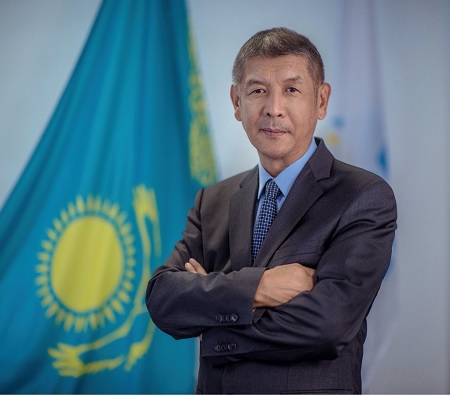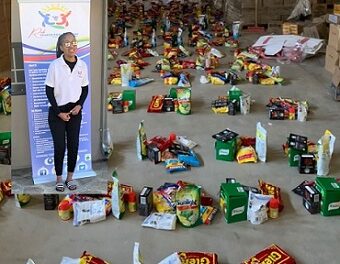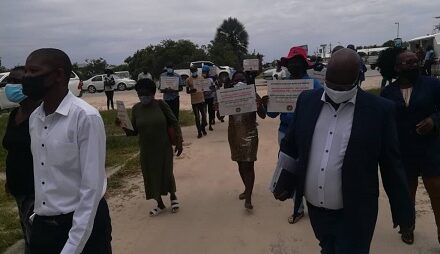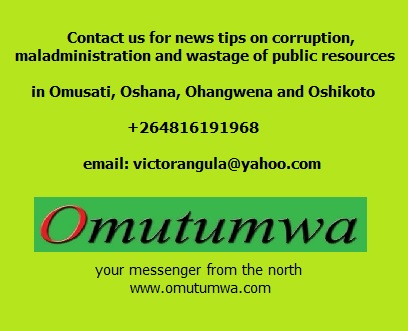In situ leach (ISL) mining is the extraction of uranium from the host sandstone by chemical solutions and the recovery of uranium at the surface. Today development of deposits using the ISL method as compared to conventional mining methods substantially reduces the harm caused to the environment and has its specific features.
It has been enthusiastically employed at many uranium deposits across Eastern Europe and the Commonwealth of Independent States (CIS).
One of the most successful examples is the experience of Kazakhstan.
Mr Baurzhan Duisebayev, ex-advisor to the Chairman of the Board of Volkovgeology, the main geological exploration company in the country, shares the country’s experience of doing research in the uranium industry.
Kazakhstan has grown significantly over the past two decades, allowing the Central Asian nation to become the world’s largest uranium-mining country. Today, nearly all of Kazakhstan’s mines employ the in-situ leaching (ISL) mining method.
This is because their uranium deposits are located in sandstone underground and below the water table in a confined aquifer making them amenable to this method. Currently, there are 26 fields (or sections) in Kazakhstan, developed by the ISL method, which are organizationally united into 14 separate mining enterprises.
The history of ISL uranium began in the USSR and around the world in the 1960s. By 2017, this method began to provide 50% of the world’s uranium production, with Kazakhstan accounting for approximately 80% of the world’s uranium production by this environmentally friendly and economical method.
In order to introduce the work, it is necessary to measure the composition of water and soil. Such measurements are carried out before the start of the construction of the mine, and during the mining process and after the closure of the mining site.
Of course, many people wonder if these operations have a negative impact on the environment. Many studies have shown that the environmental impact of ISL mines is very low, as opposed to all other existing methods of metal mining.
It is worth mentioning that all subsidiaries and affiliates of Kazatomprom, a national atomic company of Kazakhstan, have special units that ensure the implementation of environmental policies, compliance of all production processes with legislative requirements in the field of environmental protection and internal corporate procedures.
The purpose of environmental monitoring is to minimize the impact of production activities on the environment and the population living in the areas of Kazatomprom’s production activities.
The Company, among other things, supports the UN Sustainable Development Agenda 2030, including SDG 6 – “Ensuring availability and sustainable management of water and sanitation for all”, and carries out its activities in accordance with the legislation of the Republic of Kazakhstan. The Company’s water intake does not have a significant impact on water sources.
Kazatomprom does not withdraw water from sources recognized as vulnerable, protected by the state, especially valuable for local communities or biodiversity. To minimize water intake from natural sources, a number of the Company’s enterprises use closed water recycling cycles. As a result, all mine effluents are treated and sent to special isolated storage ponds.
The Company carefully monitors and manages the risk of groundwater pollution during uranium mining using the ISL method. To minimize this environmental risk at all of Kazatomprom’s operating mines, the deposit areas are surrounded by a sanitary protection zone with a radius of at least 500 meters from the ore deposits. The enterprises constantly monitor the condition of groundwater in accordance with all the requirements established by law.
It is not just about science and mining. Long-term success of its business depends on maintaining socio- economic stability in the regions where it operates and in the country as a whole, in mutually beneficial relations with representatives of state and local authorities, as well as on the quality of working and living conditions of its employees. The company consistently implements measures aimed at ensuring long-term fruitful relations with the regions where it operates in and strengthening its obligation as a socially responsible company.
In 2020, Kazatomprom transferred 1.537 billion tenge (NAD $55,600,000) to the budgets of the regions where it operates as part of its obligations under the subsoil use contracts for socio- economic development, as well as infrastructure development.
Thus, Kazatomprom operates in five regions of Kazakhstan: Turkestan Region, Kyzylorda Region, East Kazakhstan Region, Akmola Region and Almaty Region. In addition, the Company works in the cities of Nur-Sultan, Almaty and Shymkent, where it is a major employer and taxpayer.
As a result of Kazatomprom’s activities, previously disadvantaged areas with meager agriculture have in a short period turned into prosperous industrial regions on a global scale through the development of their uranium deposits.
About Volkovgeology:
Volkovgeology is the main enterprise of Kazatomprom’s system for geological support of all areas of its activities and technological drilling for mining operations of the company’s uranium mining enterprises. The main activity of the company include geological prospecting and exploration, which is a complex of geophysical research on mineral deposits, drilling and construction of exploration, hydrogeological, development and production wells, process wells, laboratory and analytical studies in the geological industry.
In the photo: Mr Baurzhan Duisebayev is ex-advisor to the Chairman of the Board of Volkovgeology.








